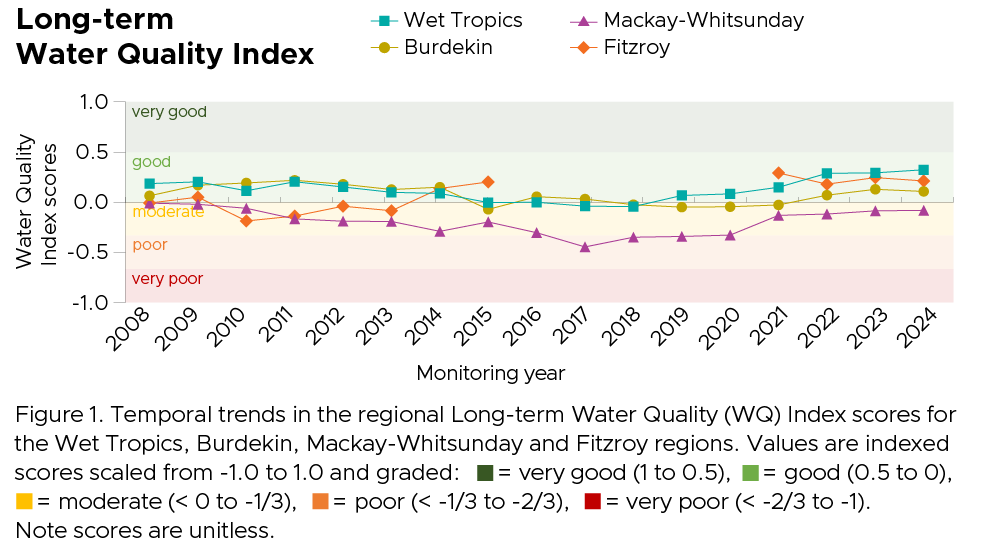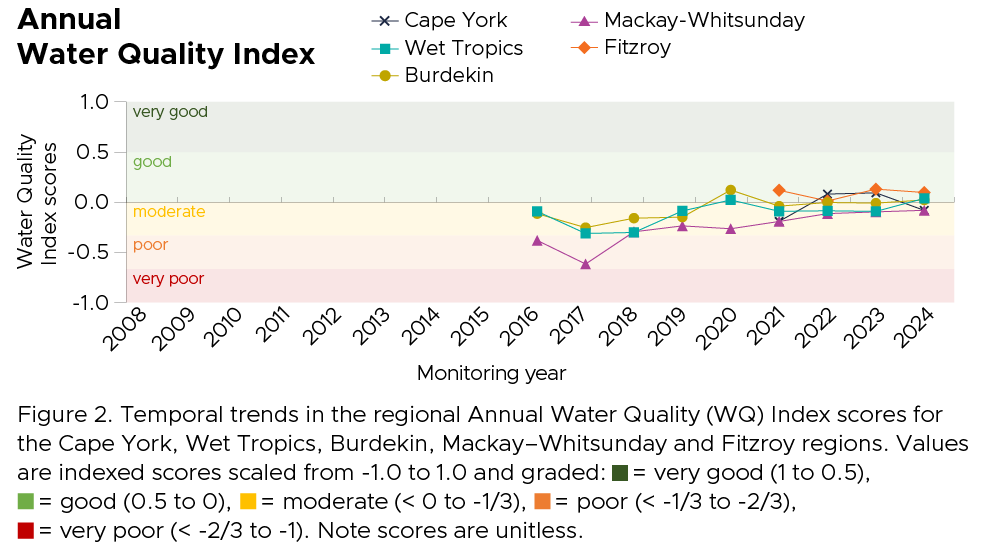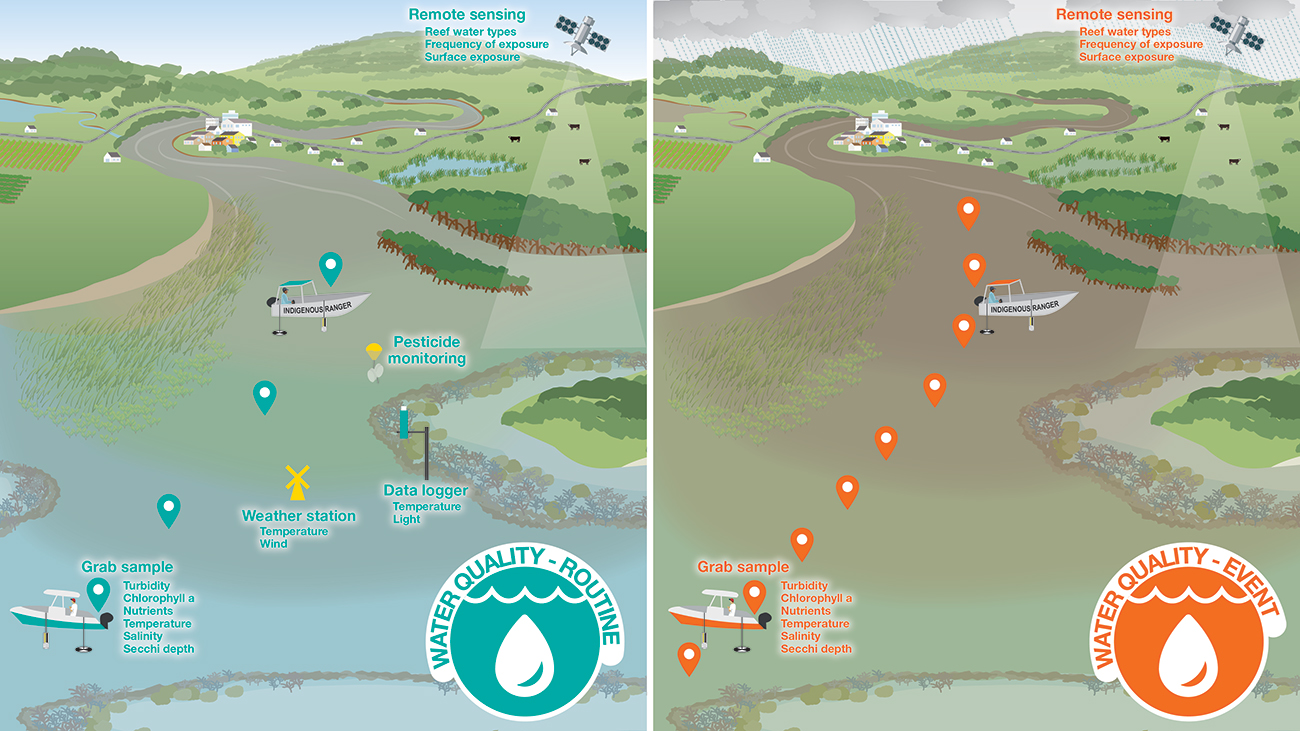Key environmental pressures in 2023-24
Two tropical cyclones affected the Reef: Cyclone Jasper crossed the Queensland coast near Wujal Wujal as a Category 2 system in December 2023, and Cyclone Kirrily crossed near Townsville as a Category 1 system in January 2024.
Rainfall was 1.5-2 times above the long-term median across all Great Barrier Reef basins, making it the fourth consecutive year with rainfall above the long-term median.
River discharge was 1.7 times above the long-term median for the Reef as a whole. Discharge from Cape York was the highest on record, with impacts of severe flooding evident in the water quality conditions in this region.
- Read the latest Marine Monitoring Program Annual Inshore Water Quality Report 2023–24
- Read the latest Marine Monitoring Program Annual Inshore Pesticide Report 2023–24
How did environmental pressures affect inshore water quality?
Inshore water quality findings:
- Long-term monitoring indicates that the water quality of the inshore Reef had stabilised or improved overall in the past five years, following a long period of decline.
- In 2023–24, the Long-term Water Quality Index showed trends of stability or improvement in water quality in all monitoring regions where this score can be generated (Figure 1.).

- The Annual Water Quality Index scored water quality as either 'good' or 'moderate' in all regions, showing a stability or improvement in conditions in all areas except for the Cape York region which experienced acute impacts from Cyclone Jasper (Figure 2.).

- Key water quality indicators such as Chlorophyll a (Chl a), phosphorus, and total suspended solids met guideline values in all or most regions.
- Nitrate/nitrite concentrations were well above guideline values however it had shown improvement in most focus regions, a promising finding if trends continue.
- The area exposed to any water quality potential risk in 2023–24 was spatially limited relative to the scale of the Reef with 90% exposed to no or very low potential risk.
- Satellite imagery showed the area of the Reef exposed to higher water quality risk categories was about 10,000km², with a higher frequency of exposure to brownish (more turbid) waters in inshore areas.
Inshore pesticides findings:
- Pesticides were detected in all sites monitored. Diuron, atrazine, hexazinone and imidacloprid were the most prevalent pesticides quantified across all sites.
- Total pesticides concentrations were highest at sites in the Mackay–Whitsunday region (Flat Top Island, Sarina Inlet, and Repulse Bay), which corresponded to high rainfall in those areas in January 2024.
What is monitored?

Water quality monitoring is routinely undertaken during wet and dry seasons (left), along permanent transects located from river mouths to open coastal areas. Additionally, monitoring of flood plumes is conducted as required during flood events (right).
Where is water quality monitored?
- Water quality is monitored in five regions:
- Cape York
- Wet Tropics
- Burdekin
- Mackay-Whitsunday
- Fitzroy*
*Monitoring of water quality in the Fitzroy region is done through the Fitzroy Basin Marine Monitoring Program, which is done in partnership between the Australian Government’s Reef Trust, the Great Barrier Reef Foundation, and the Australian Institute of Marine Science.
- Read the Marine Monitoring Program Annual Inshore Water Quality Report 2023-24
- Read the Marine Monitoring Program Annual Inshore Pesticide Report 2023-24
- Learn more on the Marine Monitoring Program Annual Report Quality Assurance and Quality Control Manual 2023–24
- In-situ Water Quality monitoring data can be downloaded from AIMS.



